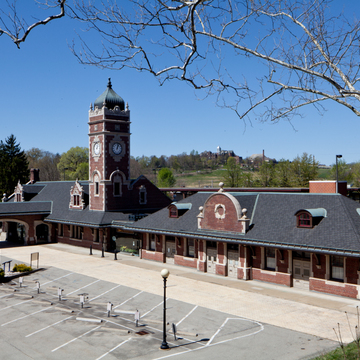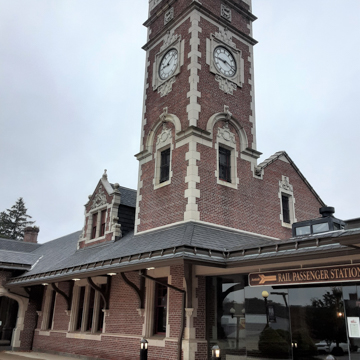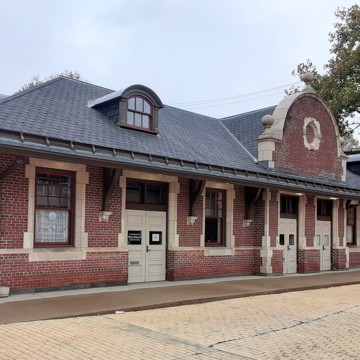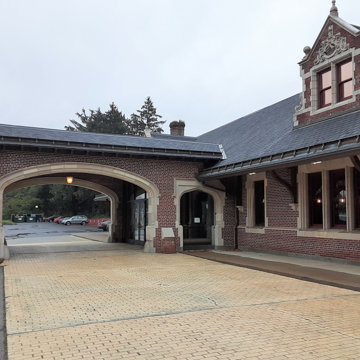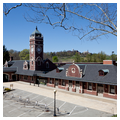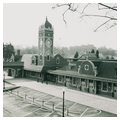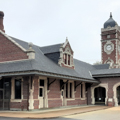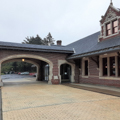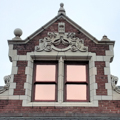Cookman, architect and engineer for the Pennsylvania Railroad, designed these elaborate passenger and freight stations on the main line between Philadelphia and Pittsburgh. While the rectangular shape of the brick buildings, their wide overhanging eaves with brackets, and the porte-cochere for the passenger station are typical features of other railroad stations, the classical details of sandstone quoins, water table, coping, pedimented dormers, and belt courses are atypical. The passenger station features an unusual square, ogee-domed clock tower accented with finials. The railroad first arrived in Greensburg in 1852, but the construction of the present buildings in 1910 represented the increased importance of the passenger trade. RWL Architects and Planners restored the two buildings in 1998 as shops, and Gerard Damiani designed the restaurant, while retaining Amtrak access.
You are here
Pennsylvania Railroad Passenger and Freight Stations
If SAH Archipedia has been useful to you, please consider supporting it.
SAH Archipedia tells the story of the United States through its buildings, landscapes, and cities. This freely available resource empowers the public with authoritative knowledge that deepens their understanding and appreciation of the built environment. But the Society of Architectural Historians, which created SAH Archipedia with University of Virginia Press, needs your support to maintain the high-caliber research, writing, photography, cartography, editing, design, and programming that make SAH Archipedia a trusted online resource available to all who value the history of place, heritage tourism, and learning.











